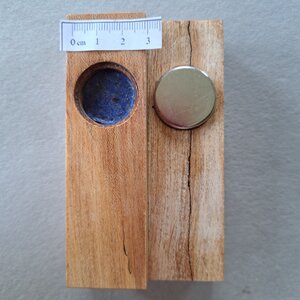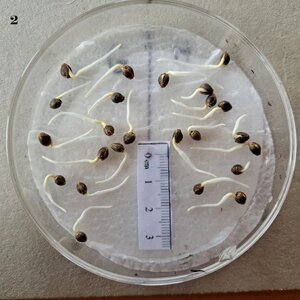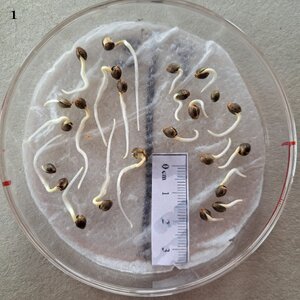I don't want to leave this as a one off. I have been busy with the same batch of seed. I got a couple of super strong 1" rare earth cylinder magnets and made a chamber to be able to handle these beasts. I still have to be careful but am learning. I have now been getting consistency, in that there are differences between treated and control sets but sometimes it is not so much difference. Here are two photos of magnetic treated dormant seed on the left and control dormant seed on the right. There are marked differences in one trial and not so much in the other. I'm working on pinning down the differences. Eg use of stratified seed, having the seed in different positions during the treatment, different time treatments. So far nothing to report definitively, just interesting and suggestive. Nothing has yielded the marked differences of that first trial ( it may have something to do with those seeds having been refrigerated???). I have a few thousand of this batch of seed...a cbd photo strain from 2020 that I either use or throw away. So as long as the seed holds out I will try to pin this down. I have been measuring radicle length with a cool open source program ImageJ used in the research and medical fields. (
http://imagej.org)
So far the numbers(an average of all that have germinated ) show that the control seed radicles are shorter than the experimentals. Percentages have been 30%, 78%, 85%, 46% The two pictures are of the 46% trial #1(marked difference) and 85% trial #2(not so much difference but still visible) The standard deviation is enormous but this is probably unavoidable and usual in outbred seed like these. So averages may not be the best indicators....if any of you are statisticians and have some tips, please chime in!
Thanks for all the comments and interest. Weird stuff especially on dormant seed.





